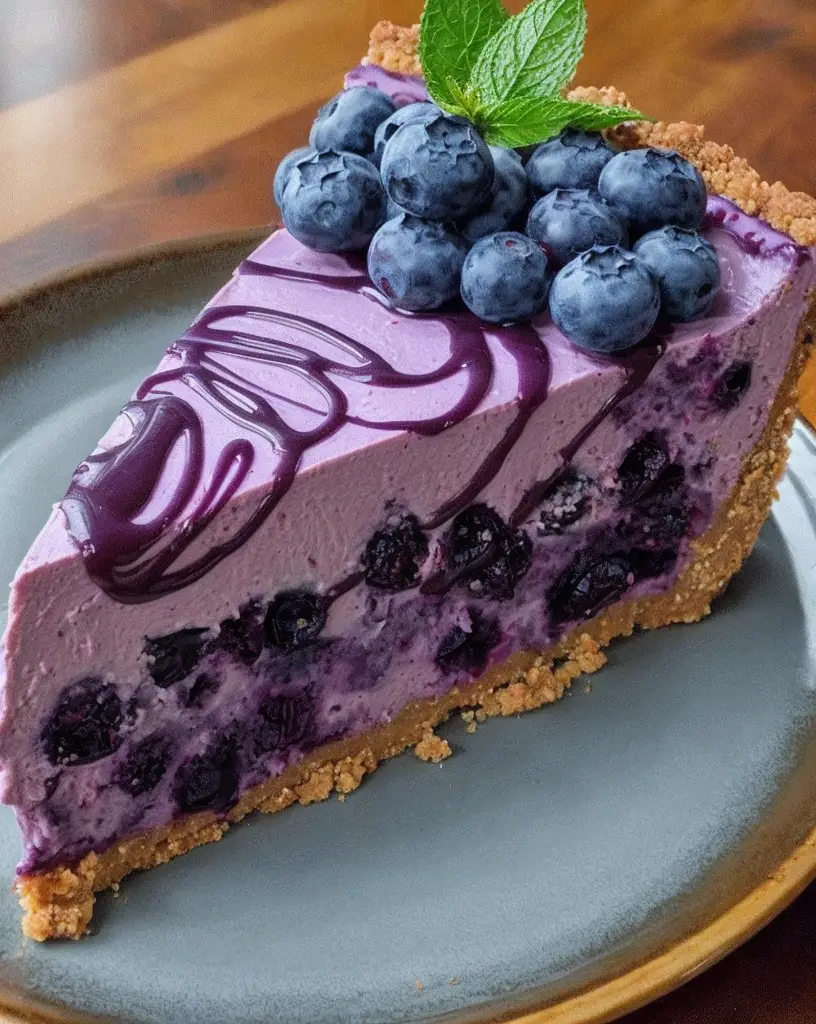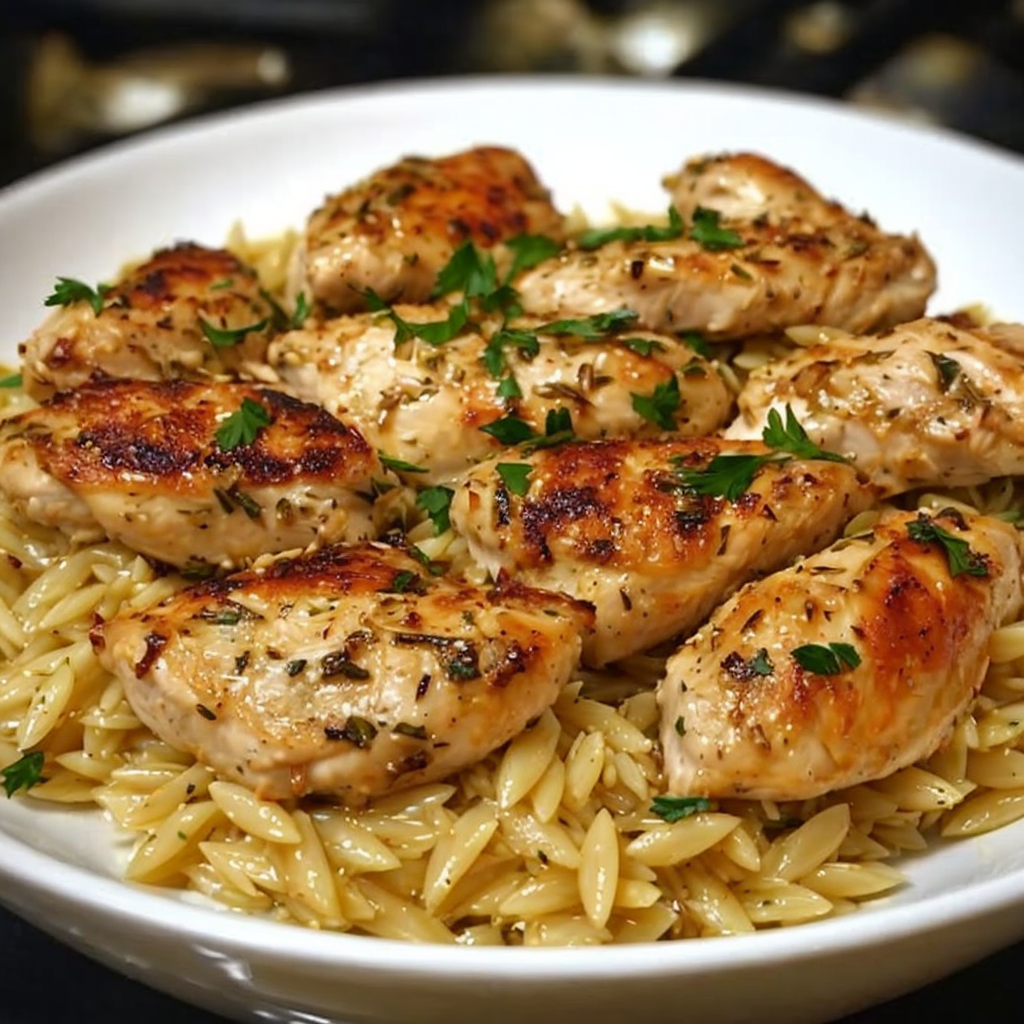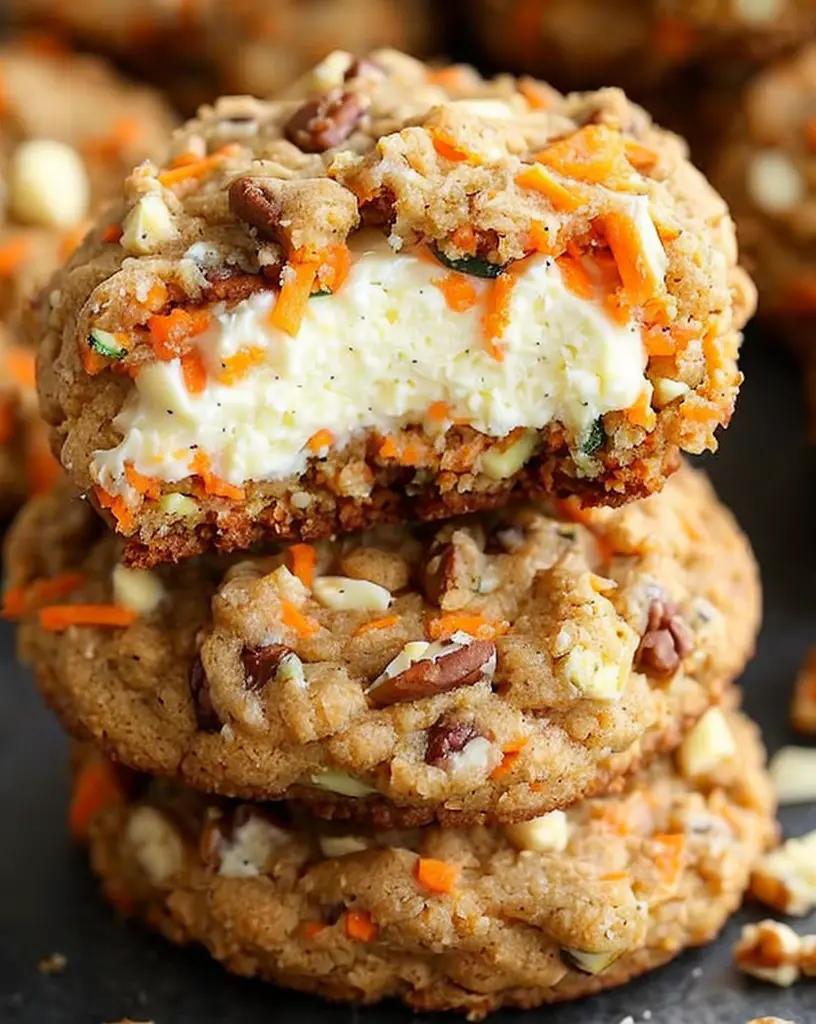Cajun Shrimp Bake: A Flavorful One-Pan Delight
Are you ready to ignite your taste buds with a delightful blend of spices and fresh ingredients? This Cajun Shrimp Bake is the perfect dish to warm your soul and impress your guests. Rich in flavor, this easy one-pan meal delivers bold Cajun spices, succulent shrimp, and a medley of colorful vegetables, making it a family favorite. Perfect for weeknight dinners or gatherings, this recipe promises satisfaction with every bite. Experience the layers of flavor that only a Cajun-inspired dish can offer!
With a tantalizing aroma and vibrant presentation, this Cajun Shrimp Bake exemplifies comfort food while keeping health in mind. The combination of plump shrimp, bell peppers, and onions harmoniously mingles with classic Cajun seasoning to create an unforgettable dining experience. Whether you’re a seasoned chef or a kitchen novice, you’ll find joy in bringing this flavorful dish to your table.
Quick Recipe Highlights
- Flavor Profile: This dish boasts a perfect balance of heat and depth, thanks to the zesty Cajun spices and fresh ingredients.
- Texture: Tender shrimp combined with crisp vegetables create a delightful crunch that complements the tender, baked goodness.
- Aroma: An irresistible blend of spices fills the kitchen, introducing notes of paprika, garlic, and herbs.
- Visual Appeal: Bursting with color from the vibrant bell peppers and juicy shrimp, this dish is a feast for the eyes as well as the palate.
- Skill Level Needed: This recipe requires basic cooking skills, making it accessible yet impressive for all levels of experience.
- Special Equipment: No special tools are needed, just a baking dish and a spatula to mix and serve!
Recipe Overview
- Difficulty Level: This Cajun Shrimp Bake is rated easy, thanks to its simple steps and minimal prep time.
- Category: This dish fits perfectly into the dinner category, ideal for both cozy nights and festive occasions.
- Cuisine: Originating from Louisiana, Cajun cuisine is known for its bold flavors and hearty ingredients that reflect its cultural heritage.
- Cost: This recipe is budget-friendly, with ingredients that are accessible and affordable.
- Season: Ideal for any season thanks to its fresh vegetables and spices, it especially shines in late spring and summer.
- Occasion: Perfect for a casual family dinner or a lively gathering with friends, this dish fits any occasion.
Why You’ll Love This Recipe
The taste and texture appeal of the Cajun Shrimp Bake will ensure it becomes a staple in your recipe repertoire. The complex flavors of Cajun seasoning paired with succulent shrimp create a combination that’s hard to resist. Each bite offers a delightful interplay of tenderness from the shrimp and a slight crunch from the green peppers and onions.
This recipe brings convenience to the forefront, allowing you to prepare everything in one pan. Cleanup is a breeze, letting you spend more time with loved ones instead of scrubbing dishes. It’s perfect for busy weeknights, and the short prep time makes it a go-to meal when you’re short on time yet still want something delicious.
Nutritionally, this dish packs a punch with its combination of high-protein shrimp and fresh vegetables. Shrimp is an excellent source of lean protein, while the vegetables add vitamins, minerals, and fiber to your diet. It’s a wholesome choice for anyone looking to eat healthier without sacrificing flavor.
Hosting friends or family? This Cajun Shrimp Bake not only satisfies hungry mouths but also serves as a fantastic conversation starter. The vibrant colors and enticing aroma make it a crowd-pleaser that invites everyone to the table, and the communal serving style brings a sense of warmth to any gathering.
Best of all, the cost-effectiveness of this recipe makes it accessible to everyone. With a few affordable ingredients, you can impress your guests and family without breaking the bank. The recipe uses pantry staples and fresh veggies, showcasing that delicious meals don’t have to be expensive.
Historical Background and Cultural Significance
Cajun cuisine has its roots in the French Acadian immigrants who settled in Louisiana and adapted their cooking styles to local ingredients. This dish embodies the spirit of Louisiana with its bold flavors, influenced by the region’s diverse cultural heritage, including French, Spanish, and African cuisines. The use of spices and cooking techniques stems from these traditions, creating a rich culinary tapestry that is cherished today.
The cultural significance of Cajun food goes beyond just the flavors; it’s a celebration of community and family. Cajun dishes are often shared in large gatherings, emphasizing the importance of togetherness through food. Recipes like this Cajun Shrimp Bake are often passed down through generations, bringing people together in the kitchen as they create delicious meals while sharing stories and memories.
Over the years, the evolution of Cajun cuisine has seen it embraced by the wider culinary world. Dishes have been adapted and modified, but the essence remains. This Cajun Shrimp Bake captures the heart of these traditions while being simplified for modern home cooks.
Regional variations of the recipe include various seafood options, such as crawfish or crab, showcasing the area’s rich aquatic resources. These adaptations reflect the locals’ creativity and resourcefulness in using what’s available to create hearty, satisfying meals.
Ingredient Deep Dive
Shrimp: As a key component of Cajun cuisine, shrimp are abundant in Louisiana’s coastal waters. They are a low-calorie protein source rich in iodine and other essential minerals. When purchasing shrimp, opt for wild-caught for the best flavor and sustainability. Store shrimp in the coldest part of your refrigerator and use them within one to two days for optimal freshness.
Bell Peppers: Bell peppers add color, crunch, and sweetness to this dish. They are low in calories but high in vitamin C and other antioxidants. Look for firm, shiny peppers with no blemishes for the best quality. Store them in the fridge, and they can last up to a week. You can substitute with other colors or varieties for different flavors.
Onions: Onions bring depth and aromatic flavor to many dishes. They are an excellent source of vitamin C, B vitamins, and potassium. When selecting onions, pick those that are firm and heavy for their size. Store onions in a cool, dark place to prolong their shelf life. Sweet onions can be used for a milder flavor.
Cajun Spice Blend: This blend of spices is what gives the dish its distinctive flavor. Typically made from paprika, cayenne pepper, oregano, thyme, and garlic powder, it reflects the boldness of Cajun cooking. You can find pre-made blends at the store or create your own. Store in a cool, dry place for maximum freshness. Substitute with a homemade blend if you’re looking for a personalized flavor.
Common Mistakes to Avoid
- Overcooking shrimp: Shrimp cook quickly; avoid overcooking to prevent rubbery texture. Watch closely, and remove when just opaque.
- Not seasoning enough: The spices are crucial for flavor. Be generous with the Cajun seasoning but adjust to taste for spiciness.
- Skipping the rest period: Allowing the dish to rest before serving helps the flavors meld. Don’t rush to serve immediately.
- Using frozen shrimp without thawing: Always ensure shrimp are thawed properly before cooking for even cooking. Thaw in the fridge overnight or under cold water.
- Not using a hot enough oven: A hot oven ensures that the shrimp bake quickly and develop a slight crust. Preheat accordingly.
- Not chopping veggies evenly: Consistent veggie sizes promote even cooking. Take time to chop veggies uniformly.
- Ignoring ingredient quality: Fresh and high-quality ingredients elevate dish flavors. Always choose the best options available.
- Forgetting to check the seasoning after cooking: Taste before serving; adjust if needed to enhance flavor. A little salt or acid can elevate the dish.
Essential Techniques
Prepping Shrimp: Cleaning shrimp involves peeling and deveining for the best texture and presentation. Always rinse thoroughly and pat dry before cooking. Avoid leaving the shells on if you prefer a cleaner look and taste. Aim for medium to large shrimp for a satisfying bite.
Sautéing Vegetables: Sautéing helps to enhance the flavors and soften the vegetables. Begin with the hardest vegetables, like onions and peppers, allowing them to sweat and release moisture. This method creates a depth of flavor that serves as a foundation for the entire dish.
Layering Ingredients: For the best flavor, layer shrimp and vegetables in a baking dish effectively. Start with vegetables on the bottom and top with shrimp to ensure even cooking. This technique prevents overcooking the shrimp while allowing the veggies to absorb flavors.
Pro Tips for Perfect Cajun Shrimp Bake
1. Plan your prep: Organize ingredients and have all prepped before you start cooking. This streamlines the process and minimizes mishaps.
2. Use fresh spices: For the best flavor, use fresh spices if possible. They intensify the dish and bring out the best in ingredients.
3. Experiment with spice level: Adjust the cayenne pepper to your liking; your spice tolerance dictates how much to use. Start small and add more if needed.
4. Add a splash of lemon: A squeeze of fresh lemon juice before serving enhances freshness and adds brightness to the dish.
5. Don’t overcrowd the pan: If making a large batch, use two baking dishes to ensure an even cook. Crowding can lead to steaming instead of browning.
6. Let it rest: Allow the dish to sit for a few minutes after it comes out of the oven for the flavors to meld and improve texture.
7. Try different proteins: Feel free to swap shrimp for chicken or sausage for variations and to cater to your preferences.
8. Garnish thoughtfully: Sprinkle fresh herbs like parsley or green onions on top for color and added freshness before serving.
Variations and Adaptations
For a regional twist, consider using andouille sausage along with shrimp. The addition provides a smoky flavor that pairs beautifully with the spices, offering a heartier meal. Seasonal adaptations can include summertime vegetables like zucchini and corn to keep it fresh and vibrant.
If you’re looking for dietary modifications, swap shrimp for tofu or chickpeas for a vegetarian option. This maintains the essence of this dish while catering to different dietary needs. Flavor variations can be achieved by adding a splash of hot sauce or varying the spices based on your liking. Adjust the cooking time for alternative proteins for the best results.
Texture modifications can transform the dish completely. For example, adding breadcrumbs before baking creates a crunchy topping, enhancing the dish’s texture and presentation. Incorporate additional herbs or spices to personalize the flavor further.
Experiment with presentation by serving the Cajun Shrimp Bake in individual ramekins for an elegant touch at dinner parties or gatherings. The same dish can look entirely different when served in smaller portions, enhancing its visual appeal.
Serving and Presentation Guide
To plate the Cajun Shrimp Bake, use a large, shallow dish that showcases the vibrant colors of the ingredients. Serve hot, garnished with freshly chopped parsley or green onions for a pop of color. A squeeze of lemon over the top just before serving brightens the dish and enhances flavors.
Additional garnishing options may include a dollop of sour cream or a drizzle of olive oil for added richness. Traditional accompaniments like crusty French bread or rice help soak up the flavorful juices, creating a satisfying meal. If you’re feeling adventurous, consider pairing it with a light salad for a refreshing contrast.
Temperature considerations are crucial for serving this dish. Serve hot for maximum flavor and enjoyment, and while leftovers are delicious cold, reheating will revitalize flavors and textures. Manage portion control by considering serving sizes based on the number of guests and sides you’re offering.
Wine and Beverage Pairing
For wine pairings, a crisp white wine like Sauvignon Blanc complements the spices and seafood beautifully. Its acidity balances the richness of the dish, enhancing the overall dining experience. Alternatively, a chilled Pinot Grigio can work well to refresh and cleanse the palate.
If alcohol isn’t your preference, consider pairing with iced tea or lemonade, which provide a refreshing counterpoint to the rich flavors of the dish. Should coffee be desired, a lightly roasted blend can offer a nuanced accompaniment to the Cajun spices.
Storage and Shelf Life
To store your Cajun Shrimp Bake, allow it to cool to room temperature before transferring it to airtight containers. It can be refrigerated for up to three days. Make sure to consume it within this timeframe for the best flavors and textures.
If you plan to keep it longer, freezing is an option, though it may affect shrimp texture slightly. Use well-sealed, freezer-safe containers or bags to prevent freezer burn. To reheat, thaw overnight in the refrigerator and warm in the oven until heated through to preserve moisture.
Make Ahead Strategies
For a seamless cooking experience, you can prep specific ingredients ahead of time. Chop vegetables and marinate shrimp for up to 24 hours before cooking. This enhances flavor and saves you significant time on prep day.
Store the shrimp and veggies separately in the fridge, ensuring freshness is retained. Upon cooking day, simply combine and bake. For optimal texture, avoid pre-baking, as the shrimp may become rubbery; it’s best to assemble and bake as close to mealtime as possible. Add finishing touches right before serving to maintain freshness.
Scaling Instructions
Halving or doubling the recipe is straightforward; simply adjust ingredient amounts accordingly. Keep in mind that cooking time may vary slightly when scaling, particularly with larger batches, so monitor doneness and adjust as needed.
When doubling or tripling, consider using larger baking dishes or two trays to avoid overcrowding. Always taste and adjust seasoning as necessary, as doubling spices doesn’t always equate to the same flavor intensity. Store any leftovers correctly, adhering to the storage guidelines for optimal freshness.
Nutritional Deep Dive
This Cajun Shrimp Bake offers a balanced macronutrient profile, mainly consisting of lean protein from shrimp and healthy fats from olive oil. It also provides essential vitamins from the vegetables included, such as vitamin C and potassium.
This dish can be especially beneficial for those looking to manage weight, thanks to its high protein and fiber content, keeping you satiated longer. The diversity of vegetables contributes to an array of micronutrients, making this dish both satisfying and nutritious.
Dietary Adaptations
For those needing gluten-free options, this recipe is naturally gluten-free, thanks to the ingredients used. For dairy-free preferences, simply remove any cheese toppings or dairy-based sauces; it still tastes splendid without them.
Vegans can enjoy the core flavors by swapping shrimp for plant-based proteins such as tofu or tempeh. A low-carb version might substitute shrimp with zucchini noodles for a fantastic alternative that maintains the flavor punch of this Cajun dish.
Should you be considering a keto approach, focus on using low-carb vegetables and maintain the base recipe without altering the spices too heavily. The spice blend remains key in either adaptation. Paleo dieters can enjoy this dish by sticking to whole foods without refined ingredients as outlined.
Troubleshooting Guide
If the texture of your shrimp turns out rubbery, this is often due to overcooking. Be vigilant about timing, and remove shrimp from the oven as soon as they become opaque.
In terms of flavor balance, if the dish tastes bland, consider adjusting seasoning at the end. A pinch of salt and a splash of lemon juice can elevate flavors significantly. If the dish is too spicy, counter it with a dollop of sour cream or yogurt.
For temperature issues, be sure your oven is fully preheated before baking to ensure everything cooks evenly. If your oven runs hot, consider lowering the temperature slightly and cooking longer to avoid burning.
Recipe Success Stories
Many who have prepared this Cajun Shrimp Bake rave about how easy it is to make and how it can be adapted based on what you have on hand. Community feedback often highlights successful substitutions, with readers sharing their personalized spice blends and additional add-ins.
Variations attempted by home cooks, such as adding different seafood or vegetables, have inspired others, encouraging creative exploration. They frequently note how this dish pairs perfectly with a simple side salad or crusty bread, enhancing the overall meal experience.
Frequently Asked Questions
Can I use frozen shrimp? Yes, you can use frozen shrimp! Just make sure to thaw them properly before cooking to ensure even cooking and optimal texture.
What can I substitute for shrimp? You can substitute shrimp with chicken pieces, tofu, or sausage depending on your preference and dietary needs.
How do I know when the shrimp is done cooking? Shrimp is done when it turns opaque and forms a nice “C” shape. Avoid overcooking to prevent a rubbery texture.
Can this recipe be made ahead of time? Yes, you can prep the ingredients ahead of time and bake shortly before serving for maximum freshness.
What should I serve with this dish? This Cajun Shrimp Bake pairs beautifully with rice, quinoa, or crusty bread to soak up the flavorful juices.
Is this dish spicy? The spice level can be adjusted based on personal preference by modifying the amount of Cajun seasoning used.
Can I make this vegan? Yes, by swapping shrimp for tofu or another plant-based protein, this dish can cater to vegan diets.
What type of baking dish should I use? A standard 9×13 inch baking dish works perfectly, but you can use any large, oven-safe dish.
How long does leftovers last in the fridge? Leftovers should be consumed within three days when stored in an airtight container in the refrigerator.
Can I freeze the leftovers? Yes, leftovers can be frozen but may slightly alter in texture. Store in suitable containers for up to two months.
Additional Resources
For more flavorful seafood dishes, check out our collection of shrimp recipes that are just as easy to prepare. Explore our technique guides for mastering sautéing and baking to enhance your culinary skills. Additionally, delve into ingredient information to learn more about the benefits of using fresh produce and quality spices in your cooking.
Don’t forget to explore seasonal variations; adapting your cooking to utilize what’s fresh and available can elevate flavors and keep meals exciting. Our related recipe resources also available will inspire your next meal plan.
Join the Conversation
We invite you to share your experiences making this Cajun Shrimp Bake! Post your photos on social media, tag us, and let us know how your dish turned out. Your feedback and suggestions contribute to our vibrant community, and we’d love to hear about your adaptations and variations.
Don’t forget to leave a review on this recipe to help others discover its wonderful flavors. Join our community by subscribing to our newsletter for more delicious recipes and cooking tips. Your culinary journey starts here!
The Recipe
Cajun Shrimp Bake
Serves: 4
Prep Time: 15 mins
Cook Time: 25 mins
Total Time: 40 mins
Kitchen Equipment Needed
- Baking dish (9×13 inch)
- Cutting board
- Sharp knife
- Measuring cups and spoons
- Mixing spoon or spatula
Ingredients
- 1 lb shrimp, peeled and deveined
- 1 bell pepper, chopped
- 1 onion, chopped
- 3 tablespoons Cajun seasoning
- 2 tablespoons olive oil
- 1 teaspoon garlic powder
- Salt and pepper to taste
- Fresh parsley for garnish (optional)
Directions
- Preheat the oven to 400°F (200°C).
- In a large bowl, combine the shrimp, bell pepper, onion, Cajun seasoning, olive oil, garlic powder, salt, and pepper. Stir until everything is evenly coated.
- Transfer the mixture to a baking dish and spread it out evenly.
- Bake in the preheated oven for 25 minutes, or until the shrimp are cooked through and the vegetables are tender.
- Let it rest for a few minutes, then garnish with fresh parsley before serving.
Recipe Notes
- Feel free to adjust the seasoning levels to fit your spice tolerance.
- Use any seasonal vegetables you have on hand for variation.
- Leftovers can be stored in the fridge for up to three days.




